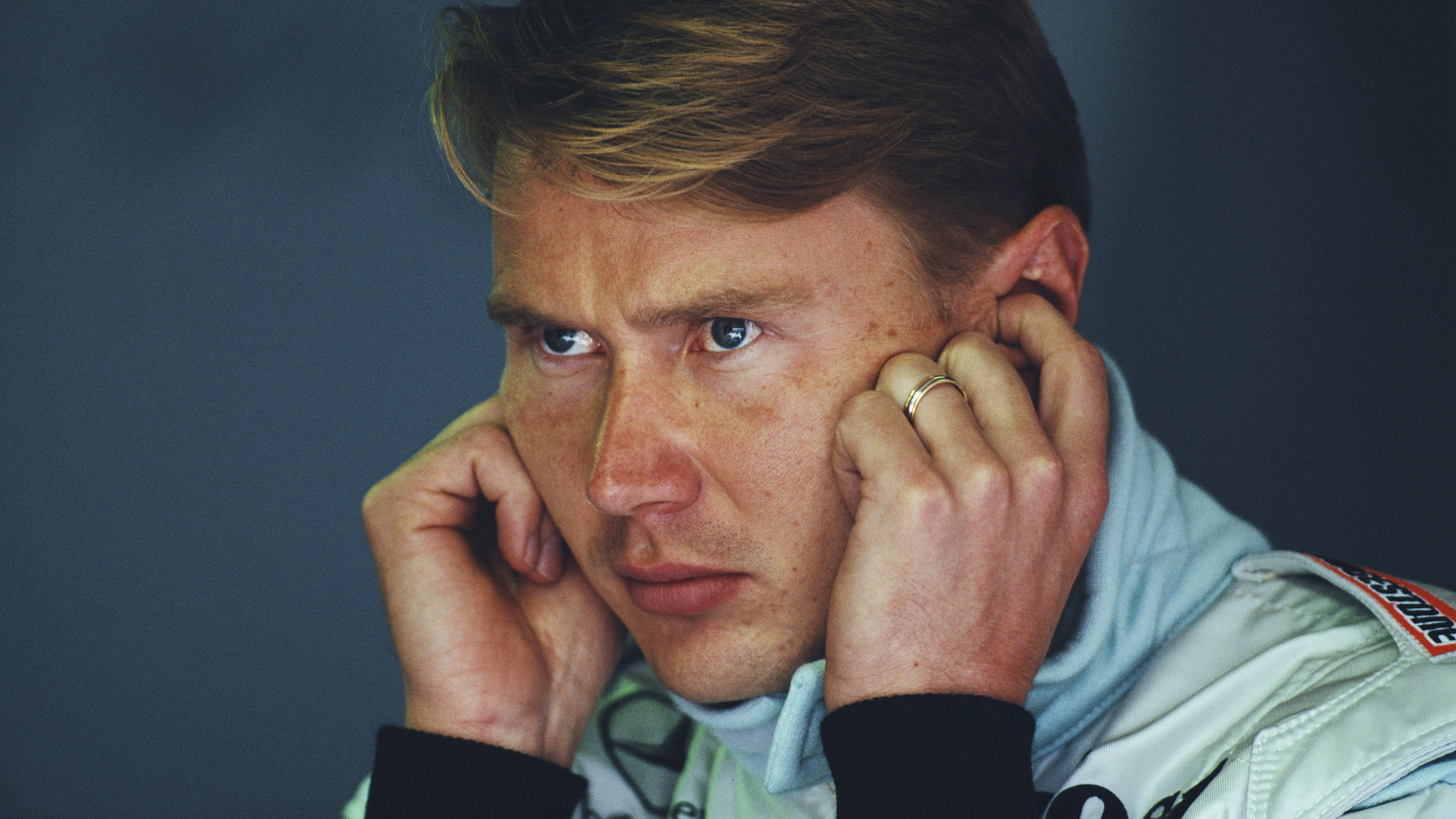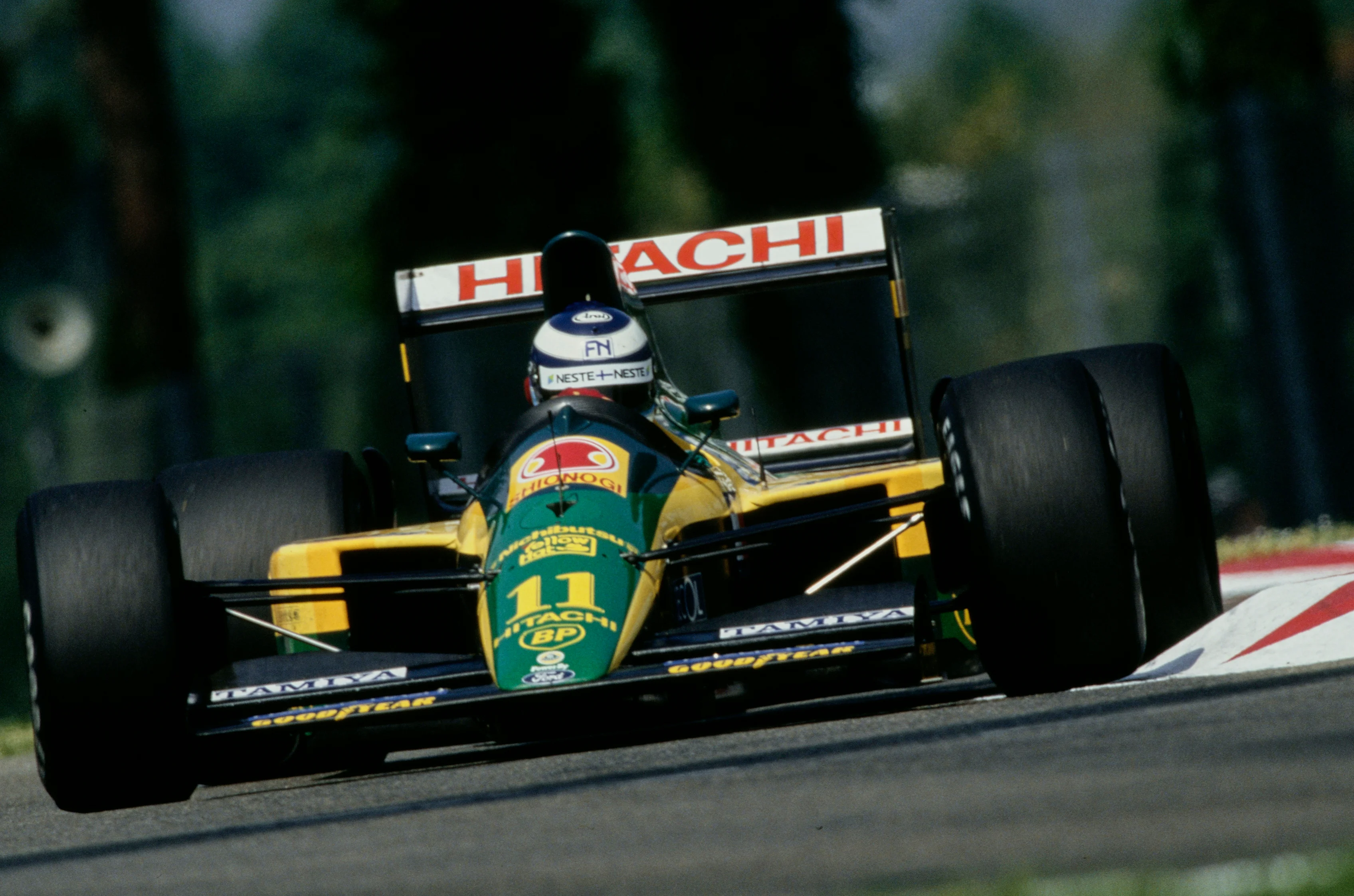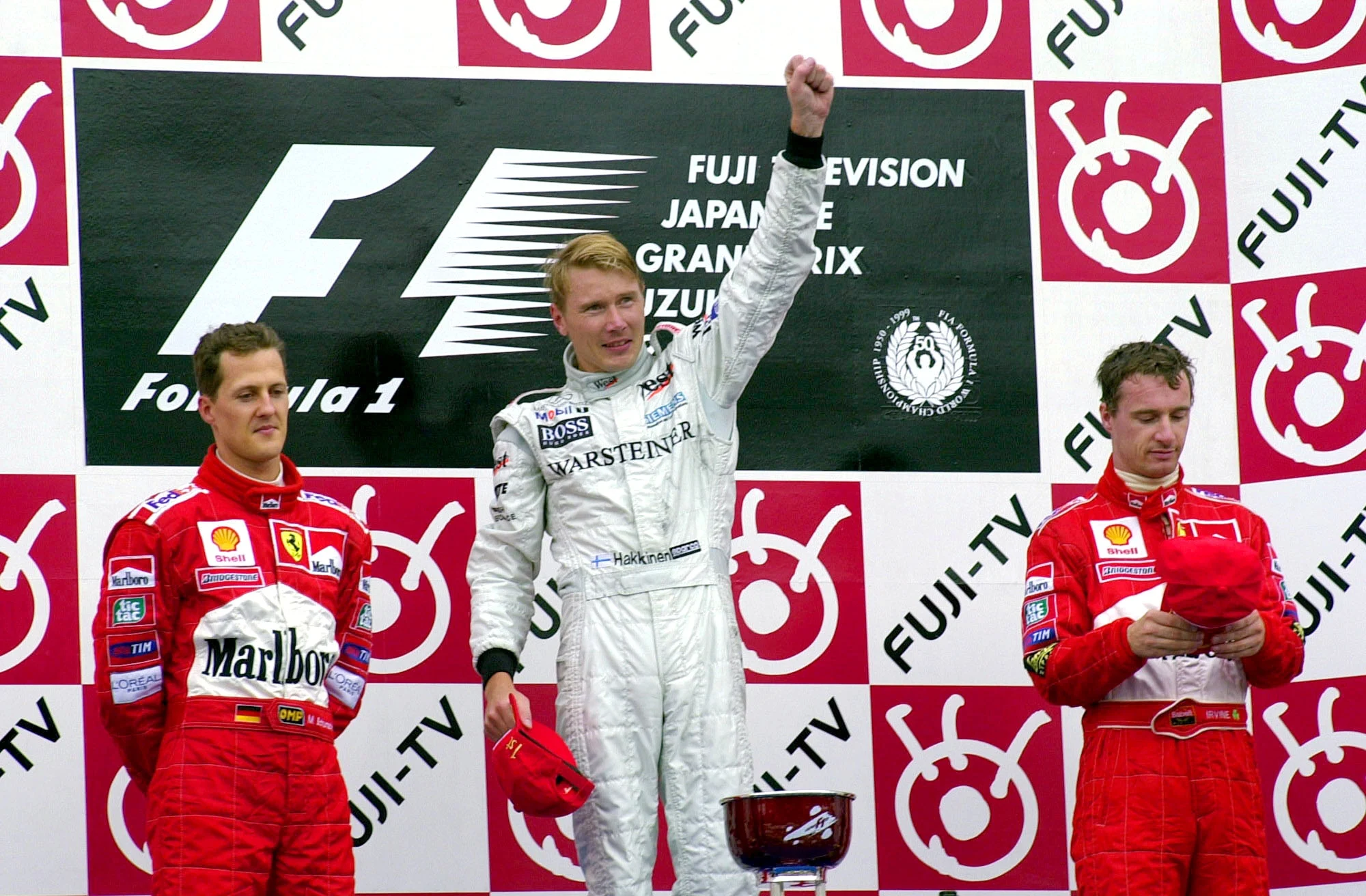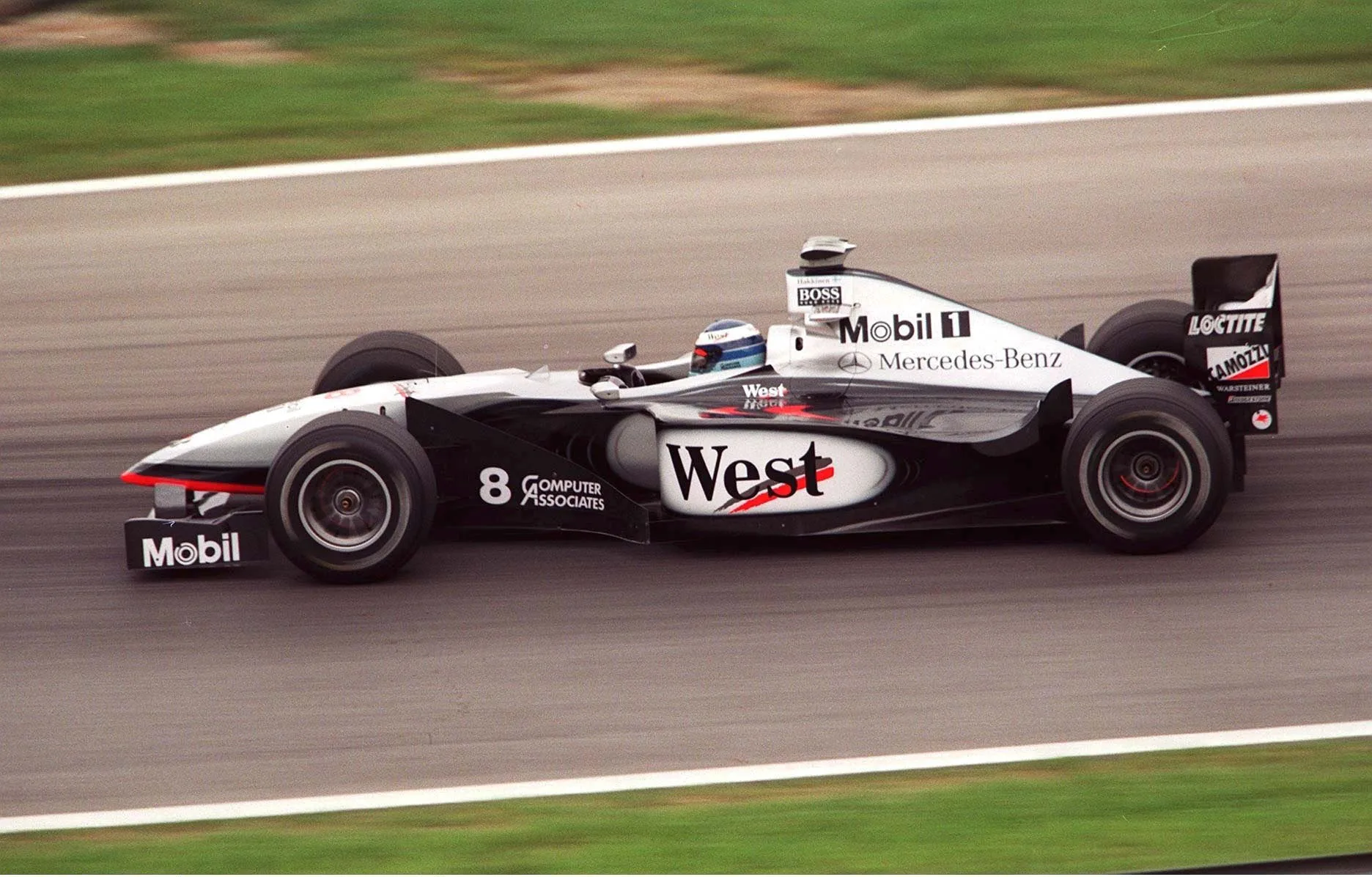HALL OF FAME - 1998, 1999
Mika Hakkinen

He never said much, preferring to let his driving speak for itself. And it spoke volumes for the laid-back Flying Finn who always drove flat out. Everybody liked the silent star and nobody begrudged the success of the brave man who was nearly killed before he achieved it. Consistent as well as quick, he scored points in over half his races, taking his lop-sided grin to the top of the podium on 20 occasions. In their 11 years as rivals the only driver who achieved more was Michael Schumacher, who said the opponent he most respected was Mika Hakkinen.
Five years after Mika Pauli Hakkinen was born, on September 28, 1968, his parents hired a go-kart for him to try at a track near their home outside Helsinki. On the very first lap little Mika had a big accident, though fortunately without injury to himself. Yet his first racing memory was not of his own fear but the look of it on his father's face. Unphased by his shaky start, Mika pestered his parents - Harri (a short wave radio operator and part time taxi driver) and Aila (a secretary) - until they bought him a kart of his own. As Mika became an increasingly quick karter the whole family - including his sister Nina - went racing for fun, forming their own little team and driving to races in a minibus. Though Mika preferred action to studying (briefly combining both by training as an acrobat at a circus school), he finished elementary school and enrolled in a metal working course. This was soon abandoned in favour of pursuing a career in a more obvious metier: by 1986 he was a five-time karting champion and had become a protege of fellow Finn, Keke Rosberg, the 1982 World Champion. They met, appropriately, in a sauna and Rosberg became his manager, arranging sponsorship that helped propel Mika "flat out" (a favourite expression of both Finns) through the junior categories of single-seater racing.

The new Flying Finn won three Scandinavian Formula Ford championships, the Opel Lotus Euroseries championship, then the 1990 British Formula Three championship, following which he was promoted to Formula One racing by Team Lotus. Though Lotus was then on a downward spiral Mika's obvious talent made him a driver in demand. In 1993 McLaren boss Ron Dennis signed him (and came to take a paternal interest in him) for testing duties and to serve as understudy to Ayrton Senna and Michael Andretti. When the latter left Formula One racing with three races of the season remaining, Mika became superstar Senna's team mate, famously out-qualifying him on his debut, in Portugal. Senna's move to Williams for 1994 (when he would die) made Mika number one at McLaren but he still had imperfections. At Hockenheim he was found guilty of triggering a ten-car crash on the first lap and received a one-race ban.
The worst accident of his career was not his fault but had nearly fatal consequences. Mika's promising 1995 season, he had seven podium finishes, ended disastrously in Adelaide. In practice some debris punctured a tyre and pitched his McLaren into a wall with sickening force. Rescue crews rushed to his aid and found Mika critically injured, bleeding profusely from the mouth and turning blue from lack of oxygen. Doctors, led by FIA medical delegate Professor Sid Watkins, performed an emergency tracheotomy, making an incision in his throat and inserting a tube so he could breathe, before transporting him to hospital where his life hung in the balance for some time. As he slowly regained consciousness Mika began to recognise the concerned faces surrounding his bed, among them his girlfriend Erja, who helped nurse him through the difficult period that followed.

Back at his flat in Monaco, where, Mika joked, he slept more than his pet tortoise Caroline, he gradually recovered all his faculties, except for a hearing impediment that contributed to a slightly slower way of speaking. But he was unsure about being able to resume his racing life. "You can only get over your fears if you attack them head on," he said. "So I had to go driving again flat out." Early in 1996, in a private test arranged by McLaren, he was immediately as quick as ever.
If the Flying Finn was still fast he had yet to translate his speed into a Formula One victory. When it came, in the last race of 1997 at Jerez, it was inconclusive in that both his McLaren team mate David Coulthard and Williams driver Jacques Villeneuve (en route to becoming champion) moved out of his way to let Mika win. His second victory, in the 1998 season-opener in Melbourne, came also through the courtesy of the loyal Coulthard, who honoured their pre-race agreement to let him take the chequered flag first. From then on there was no stopping Mika, though Ferrari's Michael Schumacher did his best in what became a season-long championship battle. Ultimately, Mika won half the season's 16 races (Schumacher won six) and became the 1998 World Champion.
In 1999 the reigning champion's task of defending his title was made easier by the absence of Schumacher (who missed several races with a broken leg) and Mika ultimately defeated Ferrari's Eddie Irvine to secure his second successive driving title. However, his season was blemished by a rare mistake made at Monza, where he threw away a seemingly sure win by selecting the wrong gear and spun out. The disconsolate driver jumped out his car, hopped over the fence, knelt down behind some bushes and wept. Cameras caught the surprising outpouring of emotion from an otherwise apparently unflappable Finn.

In truth, and in private, Mika was a sensitive man who thought deeply but spoke little about his inner feelings. "Brain fade," he said of his Monza miscue. "Formula One is a mind game, no question. You have to think so hard sometimes smoke comes out your ears! And if you don't keep your head in gear the car will overtake you."
Before long thoughts of retirement began to enter Mika's head. He kept on winning, four times in 2000 and twice the next year, by which time he and Erja (now married) had become the proud parents of little Hugo Hakkinen. Fatherhood made Mika more conscious of his sport's dangers and he grew weary of the constant effort to maintain the speed for which he was acclaimed. At the end of 2001, his ninth year with McLaren, he announced he was going to take a year's sabbatical to spend more time with his family. In fact, he never came back to Formula One racing, where the likeable man who drove flat out was sorely missed.
Text - Gerald Donaldson